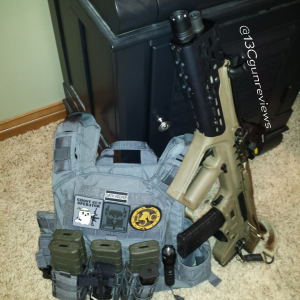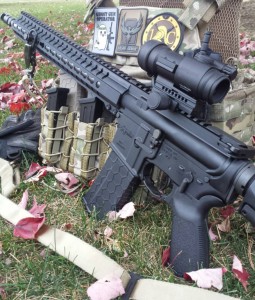This article is Part one in an on going series on Rifle uses and training.
I’m a huge advocate of training, not just the basic entry level couple of hour NRA training you find at your local shooting range but the type of training that takes you from basic firearms competency to a level where you can actually fight with your firearm. There is a huge difference between the two.
Now it might not be PC to say it but if you plan on defending yourself, you really need to come to realization that you are planning on fighting. Somehow, thanks to anti’s, this idea of everything having to include the word “defense” is now main stream. If you are going to defend yourself, you are going to have to fight and you need to get yourself into that mindset if you are serious about it and expect to prevail in a violent encounter with criminals.
We hear about the Mom in the bedroom racking a shotgun and the badguys taking off running, but how often are we planning for the times when the badguys continue to press the fight? It happens and with enough of a frequency that should you draw the short straw on needing to defend yourself, there is then a very good chance of needing to actually fight for your life and lives of those you care about.
Granted using a rifle in a self defense situation is going to the be exception, not the rule but the mindset and skills used transition to handguns as well. That said, I would highly recommend handgun training, fighting handgun training, prior to moving on to rifle training, since a handgun is something those serious about self defense have handy at all times.
When would I need to use a rifle or longarm?
Depending on your situation, location, response times of local law enforcement and other considerations, using a rifle for home defense may be the right choice for you. After weighting all your options, including issues relating to the penetration of rifle calibers through the walls in your home you may find, as I have, that a carbine chambered in 5.56 (.223) is the right option for you.
Gear Considerations-
Rifle.
Because of the nature of the 5.56 round and it’s tendency to penetrate fewer walls than a 9mm round, I’ve decided my home defense rifle should be chambered in this round. Heavier rounds, especially in the 30 caliber range such as 7.62×39 and 7.62×51 are excellent at penetrating barriers and turning cover into concealment. If you choose one of these rounds, please understand the implications to those who also share your home as well as any potential neighbors.
My preferred carbines are a Tavor or a high quality reliable AR-15 style rifle such as the CMMG Mk4 RCE. The bullpup design offers many advantages inside a house, although a AR15 can be utilized extremely well indoors with the proper training.
Sling.
Like a handgun needs a holster, a rifle needs a sling. A quality two point or especially a single point sling, will serve you very well indoors. I prefer slings that convert from a two to single point configuration.
Light.
You have to be able to identify your target. A quality weapons mounted light is a must.
Something to hold your stuff.
Plate carrier, war/battle belt… You need something. Personally I choose a plate carrier and armor. You aren’t running around and if someone is in your house and they are armed, you need to protect your vital organs. Quality magazine pouches and webbing can allow you to have a couple of reloads (just in case) as well as a place to put a hand held light as well as a backup handgun.
I’d recommend something from AR500 Armor , their plates are some of the most tested in the industry (including by myself) and their pricing is hard to beat.
Handgun.
Two is One and One is None. Should your rifle go down, you need a backup. Should you have to sling your rifle and carry your petrified 6 year old down the hallway, a handgun is a lot easier to wield one handed than a AR15. You need a quality holster for your handgun, make sure you don’t skimp here either.
Hearing protection.
Keeping a pair of electronic muffs next to your rifle is a great idea. Rifle fire inside of a building is extremely loud and you’ll need to be able to hear after firing off your rifle. Also the amplified hearing may help you hear anyone moving around your home.
Our next article will focus on some training classes you can find it HERE .





